 by "ttyymmnn" (ttyymmnn)
by "ttyymmnn" (ttyymmnn)
Published 09/27/2017 at 12:35
 by "ttyymmnn" (ttyymmnn)
by "ttyymmnn" (ttyymmnn)
Published 09/27/2017 at 12:35
Tags: planes you've (probably) never heard of
; wingspan
; Planelopnik
STARS: 9
The pace of technological development in military aviation at the end of WWII was truly staggering, but, in many ways, military doctrine was slower to change. Based on their experiences with strategic bombing during the war, the US Army Air Forces (USAAF, soon to become the US Air Force in 1947) still saw a need for fighter aircraft to protect fleets of nuclear-armed bombers as the Northrop YB-35 and Convair B-36 expanded strategic bombing to truly intercontinental distances. Thus was born the concept of the penetration fighter , a jet that would not necessarily fly alongside or above the bombers as they had during the war, but would push ahead, deep into enemy territory, and clear out enemy interceptors in the bombers’ path.
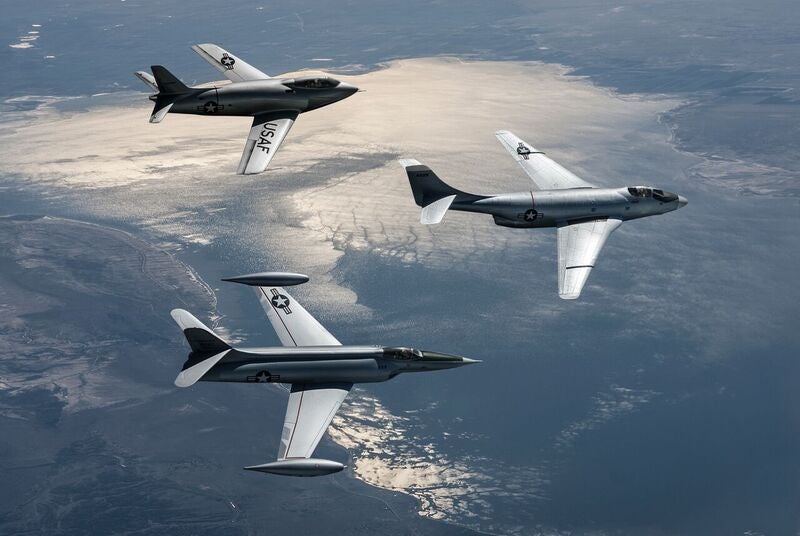
In late 1945, the USAAF published requirements for a new class of fighter that would replace all of the current jet-powered day fighters. It would have two engines, a top speed of 550 mph, take 10 minutes to reach 35,000 feet, and have a 900-mile radius. Those specifications were eventually revised to a 50,000 foot ceiling, 690 mph top speed and a 1,500-mile radius. To save time and money, the fighter was also required to be powered by existing engines, rather than “paper engines” that were still in the design stage. Ultimately, three aircraft came out of this process: The McDonnell XF-88 Voodoo, Lockheed XF-90 and North American YF-93.
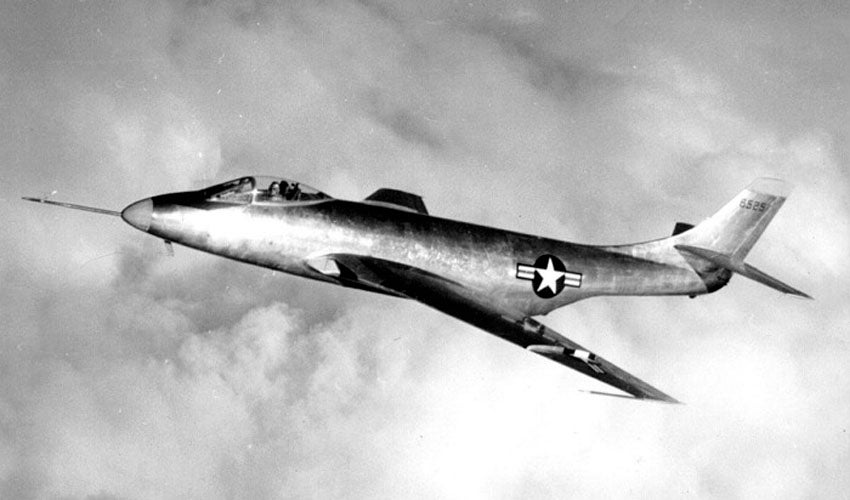
The McDonnell XF-88 Voodoo (not to be confused with the later F-101 Voodoo , a development of the XF-88) was the first to fly and was originally designed with straight wings and a V tail, though 35-degree swept wings and conventional tailplane were ultimately selected. Its two Westinghouse J34 turbojet engines provided 6,000 pounds of thrust, but its top speed of 641 mph was less than the North American F-86 Sabre . So, afterburners were added which increased thrust to 7,200 pounds and raised the top speed to 706 mph. The large fuselage housed copious amounts of fuel to feed the thirsty turbojets. The rounded nose did not contain a radar. Instead, the space was reserved for six 20mm cannons. The Air Force was all set to award a production contract to McDonnell before it was decided that other entrants must be considered. This was done not only in the interest of fairness, but also to assuage any potential hurt feelings on the part of Lockheed, as the Air Force didn’t want to lose them as a future contractor. So, two more aircraft were added for consideration.
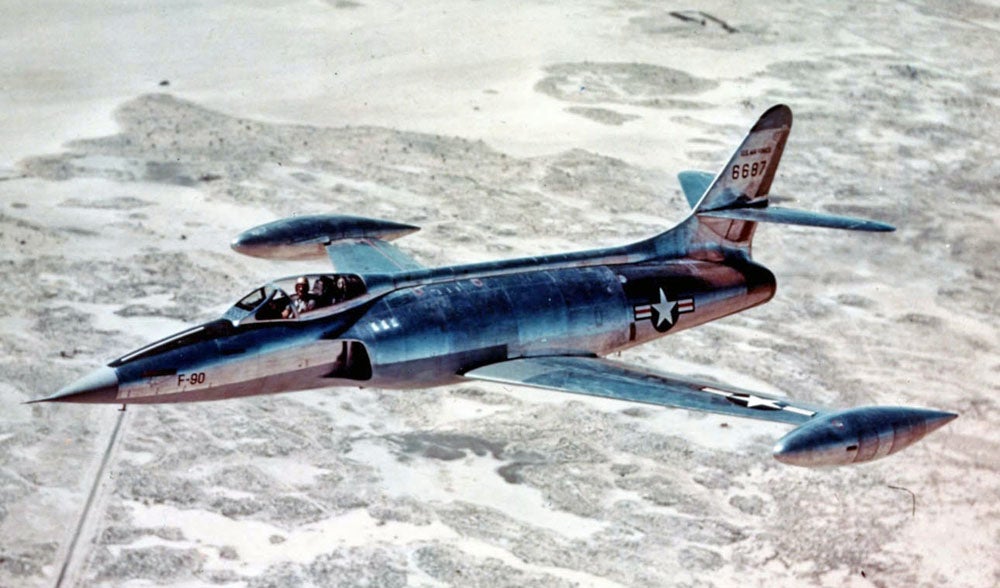
The first was the Lockheed XF-90 . Overseen by Clarence “Kelly” Johnson , Lockheed’s offering bore more than a passing resemblance to America’s first operational jet fighter, the P-80 Shooting Star , but with swept wings and a pointed nose. Like the Voodoo, the XF-90 was powered by a pair of Westinghouse J34 engines and made use of leading-edge slats and Fowler flaps that both increased wing area and provided additional camber. Wingtip fuel tanks augmented the internal fuel load, and the XF-90 was the first US jet fighter to be fitted with an afterburner and the first Lockheed jet to exceed the speed of sound, though it could do so only in a dive. However, the XF-90 was also significantly heavier than its competitors, which hampered its speed and range.
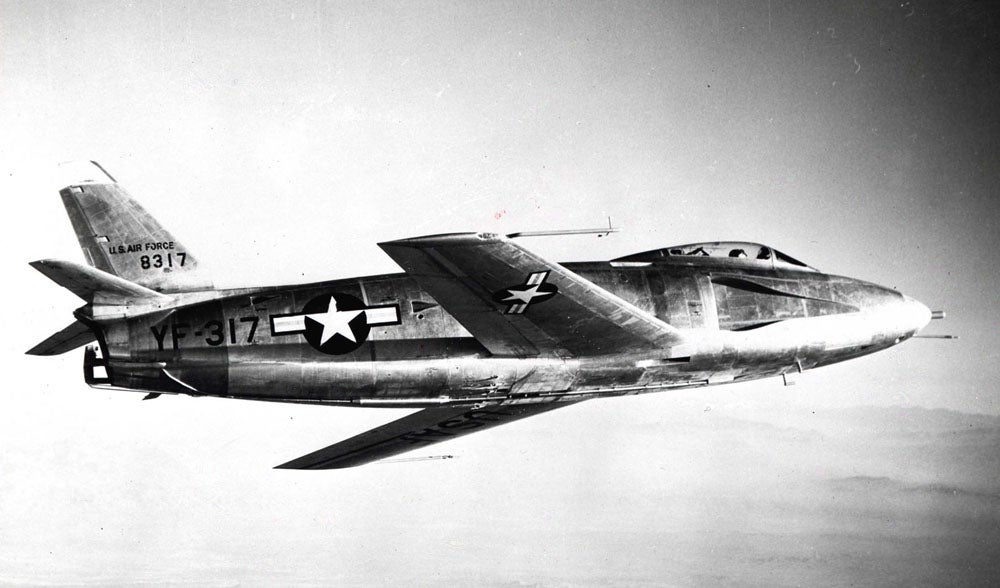
The second aircraft added to the penetration fighter competition was the North American YF-93. The YF-93 was developed from the F-86 Sabre, and the lines of the classic dogfighter are readily apparent. Gone, however, was the gaping nose air intake, replaced by a search radar and space for six 20mm cannons. The intakes were moved to the sides of the fuselage under the canopy. The slender fuselage of the F-86 gained significant girth to accommodate additional fuel, but where the other penetration fighters had two engines, the YF-93 was powered by a single Pratt & Whitney J48 afterburning turbojet that provided up to 8,750 pounds of thrust and a top speed of 708 mph.
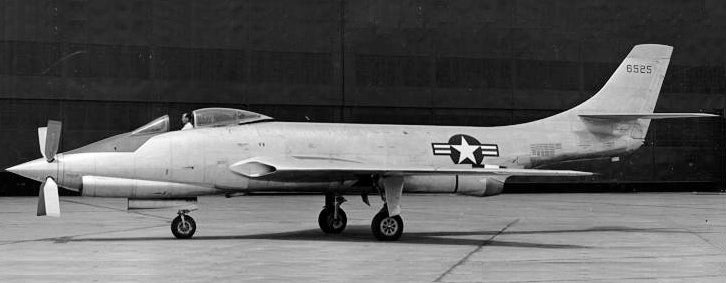
After a fly-off between the three entrants, the Air Force awarded a production contract to North American for 118 YF-93s, and indicated that the commonality between the YF-93 and the F-86 was a significant factor in their choice. However, cuts in the 1949 defense budget led to the cancelation of the contract. Instead, the money was used to procure bombers for the widening Cold War , and more traditional fighters for the Korean War . In the end, the development of the jet-powered Boeing B-47 Stratojet and B-52 Stratofortress bombers rendered the entire penetration fighter concept obsolete, and none of the large fighters ever entered production. Both YF-93s prototypes ended up in the scrap yard, and the prototypes of both XF-88s were scrapped as well, but not before the first was fitted with an Allison T38 turboprop and became the first propeller-equipped aircraft to break the sound barrier. The first XF-90 prototype was tested to destruction by NACA , and the second was used for nuclear radiation testing in the desert. The remains have since been recovered and, after decontamination, will be presented as is at the US Air Force Museum in Ohio as a demonstration of the effects of nuclear weapons.

!!! UNKNOWN CONTENT TYPE !!!
!!! UNKNOWN CONTENT TYPE !!!
!!! UNKNOWN CONTENT TYPE !!!
!!! UNKNOWN CONTENT TYPE !!!
!!! UNKNOWN CONTENT TYPE !!!
!!! UNKNOWN CONTENT TYPE !!!
!!! UNKNOWN CONTENT TYPE !!!
If you enjoyed this post, please join in the conversation and let me know. For more stories about aviation, aviators and aircraft oddities, head over to
Wingspan
.
!!! UNKNOWN CONTENT TYPE !!!

09/27/2017 at 12:53, STARS: 3

That’ll be interesting seeing the XF-90 like that. I shouldn’t be, but I’m surprised how intact that plane is. I mean, it’ll never fly again, but you can tell what it was, which you wouldn’t expect from something that was nuked. Must be made of the same stuff as Indy’s fridge .
 "X37.9XXS" (x379xxs)
"X37.9XXS" (x379xxs)
09/27/2017 at 13:02, STARS: 2
You seem to have forgotten the f90's sub rosa career, which lasted for decades

https://en.wikipedia.org/wiki/Blackhawk_(DC_Comics)
 "ttyymmnn" (ttyymmnn)
"ttyymmnn" (ttyymmnn)
09/27/2017 at 13:08, STARS: 4
Hah! I’ve never seen that. Check out the cover for issue #12. Those are Grumman XF5F Skyrockets, which I wrote about a couple of weeks ago. Grumman only ever built one, though.
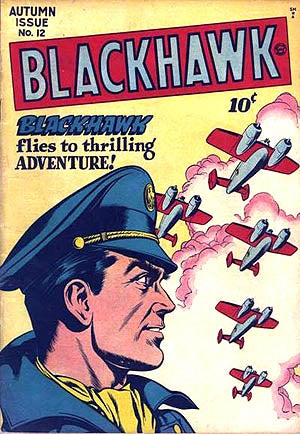
 "WilliamsSW" (williamssw)
"WilliamsSW" (williamssw)
09/27/2017 at 16:24, STARS: 1
It’s not hard to see why -the XF-90 should have been built, just because it looks so badass.
 "gmporschenut also a fan of hondas" (gmporschenut)
"gmporschenut also a fan of hondas" (gmporschenut)
09/28/2017 at 23:37, STARS: 2
it’s amazing how quickly designs were made completly obsolete back then.
 "ttyymmnn" (ttyymmnn)
"ttyymmnn" (ttyymmnn)
09/28/2017 at 23:44, STARS: 0
It’s not an exaggeration to say that aircraft were obsolete the day they came off the production line. Things were moving that fast.